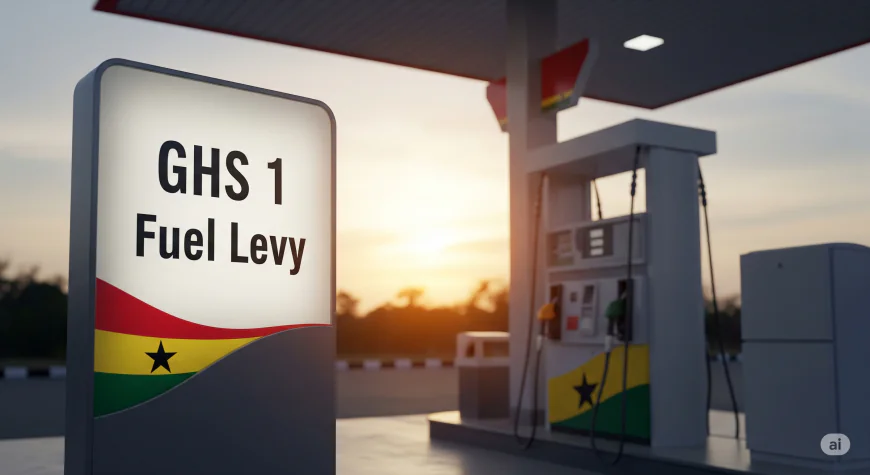FAQs: What Ghanaians Need to Know About the New GHS1 Fuel Levy
Ghana’s Energy Ministry explains the GHS1 per litre fuel levy through a detailed FAQ. Learn how the Energy Sector Levies (Amendment) Act 2025 affects fuel pricing, electricity, and national energy security.

The Government of Ghana, through the Ministry of Energy and Green Growth, has published a detailed Frequently Asked Questions (FAQ) guide to explain the new GHS1 per litre levy on refined petroleum products introduced under the Energy Sector Levies (Amendment) Act, 2025 (Act 1050).
The one-cedi levy is designed to help the government finance the procurement of liquid fuels used in thermal power generation, ensuring uninterrupted electricity supply and long-term energy sustainability.
Here’s a summary of the key questions answered in the official FAQ:
FAQs: Understanding the GHS1 Fuel Levy
1. What is the Energy Sector Levies Act (ESLA)?
Passed in 2015 and amended in 2017, 2019, and 2021, ESLA aims to ensure efficient use of energy sector levies, address debt, and promote long-term energy investment.
2. Why was the 2025 Amendment Introduced?
The 2025 amendment establishes a new levy to raise dedicated revenue for purchasing liquid fuels, especially for thermal power plants, which are essential for Ghana’s electricity supply.
3. Is the Cost of Liquid Fuels Included in Electricity Tariffs?
No. The cost of liquid fuels is not factored into electricity tariffs. According to the PURC, adding it would increase electricity rates by over 50%. Government financing has been used to cover this gap.
4. What Is the Estimated Fuel Procurement Cost for 2025?
The government estimates it will need:
-
USD 1.2 billion, or
-
GHS12.6 billion (using an exchange rate of USD 1 = GHS 10.5)
to fund fuel imports for power generation.
5. How Much Is the New Levy?
The levy is fixed at GHS1 per litre of refined petroleum products.
6. What Is the Expected Annual Revenue from the Levy?
Approximately GHS5.7 billion is projected annually from the one cedi levy.
7. Will the Levy Fully Cover the Fuel Costs?
No. The projected revenue will not fully cover the estimated cost. The Ministry of Finance will continue to subsidize the shortfall to ensure consistent fuel supply for power generation.
8. Is There a Time Limit on the Levy?
There is no sunset clause in the Act. Rather than specify a fixed duration, the government intends to use the levy as part of a long-term strategy to:
-
Stabilize natural gas supply
-
Enhance energy sector transparency
-
Improve technical performance of distribution networks
9. How Will the Funds Be Managed?
All funds will be ring-fenced and used exclusively for their intended purpose. The Ministry of Energy has committed to transparent management, with periodic audits and public reports. The fund is under direct oversight and will be used solely for fuel procurement and energy stabilization efforts.
Public Reassurance and Strategic Focus
The Ministry emphasized that this levy is a strategic move to shield Ghanaians from extreme electricity tariff hikes, avoid blackouts, and promote energy reliability. With increasing global fuel prices and Ghana’s dependence on thermal power, officials say this proactive approach will keep the lights on without pushing the cost burden entirely onto consumers.
Ghanaians are encouraged to familiarize themselves with the FAQs to understand how the levy fits into the broader context of national energy planning and sustainable development.
Issued by:
The Communication Unit
Ministry of Energy and Green Growth, Ghana
For continuous updates on economic and corporate developments in Ghana, follow thehubweb.com.


